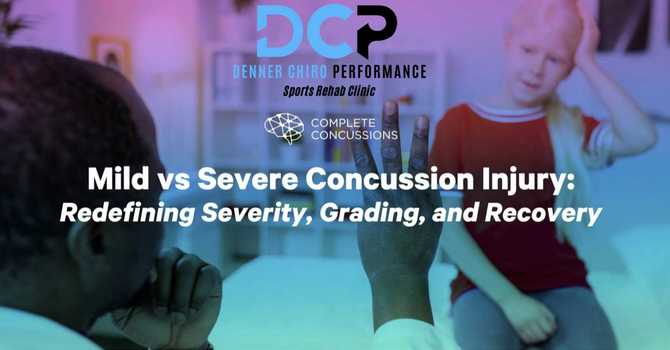
Introduction to the Sports Concussion Assessment Tool 6 (SCAT6)
The Sports Concussion Assessment Tool, commonly referred to as SCAT, is a standardized diagnostic test designed to assess acute concussions resulting from sports-related incidents. The SCAT can be performed in 10 to 15 minutes, in multiple environments, and requires minimal equipment, proving itself to be an invaluable resource for promptly identifying and evaluating concussion injuries in a sport setting. The SCAT is largely utilized in the initial phase of care, ideally within 72 hours of the incident, and remains effective for up to 7 days following a mild traumatic brain injury.
Dynamic in its nature, the SCAT undergoes periodic refinements in response to emerging insights and information. These revisions are vital to ensuring the tool's accuracy in detecting sports-related concussion injuries. Medical practitioners are strongly urged to remain current and well-informed about these evolving changes to the SCAT.
This blog post will focus on the revision made to the SCAT5 leading to the enhanced SCAT6. Understanding the current SCAT6 and current health research that has been supported by the scientific committee will help healthcare professionals partially in the field of athletic training and sports medicine identify acute concussion injuries.
The Sports Concussion Assessment Tool (SCAT)
The Sports Concussion Assessment Tool (SCAT) is a pivotal asset within the domain of identifying acute sports-related concussions. This standardized tool takes center stage as an indispensable "on-field" evaluation test, designed to assist sports medicine providers when trying to determine if an athlete has experienced a sports concussion injury. However, it's essential to underscore that the SCAT's role is not intended to grade the magnitude or gravity of the concussion itself.
In scenarios where an athlete's condition raises concerns about a possible concussion, the SCAT can easily be implemented into the assessment protocol of a team physician or athletic training team. The SCAT assists medical practitioners with a reliable method to systematically and accurately identify suspected sports-related concussions.
In the realm of timely and informed medical decision-making, the SCAT takes on a profound role, ensuring that athletes receive the appropriate care and attention in the aftermath of potential concussive events.
When fresh insights emerge with the potential to significantly enhance the effectiveness of the Sports Concussion Assessment Tool, it's time for some fine-tuning. Revisions come into play to ensure that the tool stays in sync with the latest evidence and insights. An illustrative example of this process is the transition from SCAT5 to the upgraded SCAT6, which was prompted by the Amsterdam consensus statement.
Now, let's discuss the new additions to the SCAT6 and how they will affect acute concussion assessments. The changes made to the SCAT5 were based on a comprehensive systematic review, followed by some in-depth discussions among a panel of top-notch experts, all convened as part of the Amsterdam Consensus statement. Their collective expertise paved the way for the recommendations that shaped the evolution of the SCAT6.
Improve Psychometric Properties
The evaluation of immediate memory involves the administration of a list of words by the examiner, which the examinee must then recite back, attempting to recall as many words as possible. Notably, the transition from SCAT5 to the updated SCAT6 has brought about an alteration in this aspect. Specifically, the SCAT6 revision involves a departure from the previous 5-word list, opting instead for a more extensive 10-15 word list.
The decision to eliminate the 5-word list and introduce a longer list in SCAT6 stems from the aim to enhance sensitivity and precision when assessing immediate memory. A ceiling effect was commonly observed when the 5-word list was utilized prompting researchers to question the involvement in the SCAT. (1)
Cognitive Composite
An additional refinement to the SCAT involved the introduction of a cognitive composite score. This score is the culmination of the results from the orientation, immediate memory, concentration, and delayed recall segments within SCAT6. This alteration was prompted by insights derived from systematic reviews and extensive expert panel discussions, all aimed at enhancing the test's consistency in repeated evaluations and diminishing instances of false positive outcomes.
The integration of an overarching composite score holds distinct advantages. It provides healthcare professionals with a comprehensive perspective on the athlete's cognitive performance. Furthermore, it aids in identifying potential false positives, and instances where an athlete might exhibit poor performance in a single aspect, thereby mitigating misinterpretations. This comprehensive approach to sports healthcare will help determine the overall cognitive condition of an athlete and aid in injury prevention.
Increase Digit Span Subtest
The Digits Backwards Test assumes a pivotal role in assessing an athlete's capacity to concentrate post sports-related concussion. In this evaluation, the athlete is presented with a series of numbers and directed to recite them in reverse order. Building on the guidance from the Amsterdam Consensus statement, a strategic adjustment was proposed to augment the length of the longest sequence of digits by two.
The rationale underlying this recommendation, according to the Amsterdam Consensus statement, aims to mitigate a ceiling effect observed with SCAT5. By expanding the scope of the test, this adjustment seeks to provide a more nuanced evaluation of an athlete's cognitive capabilities. However, it's noteworthy that this recommendation has yet to be integrated into SCAT6, which currently retains the use of a 10-digit list, consistent with SCAT5's approach.
Revised Months Backwards Component
An additional facet that contributes to gauging an athlete's ability to maintain focus on a task involves the utilization of the "Months Of The Year In Reverse Order" test. In this evaluation, the healthcare provider administering the test instructs the athlete to recite the months of the year in reverse sequence, commencing with December.
A noteworthy evolution has occurred in this component of concentration testing through the incorporation of timing into the task. Unlike its previous iteration in SCAT5, which was based on the athlete's accuracy in performing the list, SCAT6 introduces a timing element. In the context of SCAT6, successful completion of the task demands that the athlete accurately recite the months in reverse order within a duration of 30 seconds. This revision aligns with the evolving pursuit of precision and comprehensiveness in evaluating an athlete's cognitive capabilities.
Addition of Timed Dual Gait Task
This new addition represents a notable expansion in the SCAT framework. The Dual-Task Gait component is an innovative introduction in SCAT6, designed to enhance the assessment of sports-related concussions.
Research by Van Deventer et al. has delivered promising results. Their findings indicate that post-concussion, both single and dual-task tandem gait performances exhibited a decelerated pace when compared to control subjects. Moreover, the implementation of tandem gait cut-points demonstrated a commendable accuracy rate of over 80% in distinguishing between concussion and control groups.
The incorporation of this test holds significant relevance as it assesses an athlete's ability to effectively combine multi-sensory inputs while simultaneously engaging in mental concentration tasks. This dimension holds particular importance, emulating real-game situations where athletes must not only execute physical maneuvers but also sustain cognitive acuity throughout the course of the game. This inclusion reflects the evaluation of concussion testing as sports health care providers try to emulate in-game experiences. (2)
Addition of visible signs to the SCAT6/Child
Visible indicators, when identified by a healthcare provider, can often suffice in isolating a concussion diagnosis. The vigilant monitoring of the injury's onset and the ensuing timeframe is of paramount importance in accurately detecting the presence of a concussion, thereby guiding the subsequent steps for evaluation and medical intervention.
In the context of the SCAT6, a comprehensive list of signs has been incorporated. These include but are not limited to: instances of falling without any protective reflex, tonic posturing, impact-related seizure, ataxia or motor incoordination, alterations in mental state, and the manifestation of a blank, vacant, or dazed expression.
Support Serial SCAT6/Child SCAT6 Assessments After An Athlete Is Removed From Play
The trajectory of a concussion can exhibit swift and pronounced transformations within a short timeframe. As new signs and symptoms surface, healthcare providers play a pivotal role in gauging the occurrence of a concussion, particularly in instances where athletes' self-reporting of symptoms lacks clarity or precision. In cases where the initial injury remains unobserved, healthcare professionals are tasked with charting a suitable course of action, employing tools like the SCAT alongside other concussion detection methods.
Guidance from the Amsterdam consensus highlights the sequential use of the SCAT in concussion assessment. Employing the SCAT serially after an initial evaluation facilitates not only the determination of the concussion's presence but also lends insight into the progression of symptoms. This approach serves as an indicator of underlying pathologies unfolding within a sequence, contributing to a more comprehensive understanding of the evolving concussion presentation.
Conclusion
The Sports Concussion Assessment Tool (SCAT) stands as a pivotal instrument in the realm of detecting acute mild traumatic brain injuries. To best aid athletes in addressing potential concussion injuries, healthcare providers are encouraged to acquaint themselves with the recent enhancements introduced to the SCAT.
For a comprehensive understanding of the SCAT and the updated additions to concussion protocols, refer to the latest consensus statement. This resource provides a detailed and current account of the pertinent information surrounding evidence-based concussion care.
Denner Chiropractic & Performance | Charlotte, North Carolina | Concussion
At Denner Chiropractic & Performance, located in Charlotte North Carolina our concussion doctors specialize in the acute diagnosis, treatment, and rehabilitation of concussion injuries. Our rehab chiropractic care incorporates rehabilitation, joint manipulation, soft tissue, and dry needling to help you achieve pain-free movement in life and sports. Dr. Denner is certified through Complete Concussion Management (CCMI). CCMI is the world leader in evidence-based concussion treatment and rehabilitation. Denner Chiropractic & Performance has gone through the rigorous process of being a certified concussion clinic through CCMI. We are more than happy to discuss any concerns or questions you have about your condition or how we can help. Located on our main page or in our resource library tab is a sign-up for a free Discovery Call. During this time we will get to know you and your pain points. Let’s see if we are the right provider for you, schedule your Discovery Call today!
Citations 1. Echemendia RJ, Burma JS, Bruce JM, et al. Acute evaluation of sport-related concussion and implications for the sport concussion assessment tool (Scat6) for adults, adolescents and children: a systematic review. Br J Sports Med 2023:bjsports-2022-106661.2. Van Deventer KA, Seehusen CN, Walker GA, Wilson JC, Howell DR. The diagnostic and prognostic utility of the dual-task tandem gait test for pediatric concussion. J Sport Health Sci. 2021;10(2):131-137. doi:10.1016/j.jshs.2020.08.0053. Patricios JS, Schneider KJ, Dvorak J, et al. Consensus statement on concussion in sport: the 6th International Conference on Concussion in Sport-Amsterdam, October 2022. Br J Sports Med. 2023;57(11):695-711. doi:10.1136/bjsports-2023-106898

Denner Chiro Performance
Contact Me



